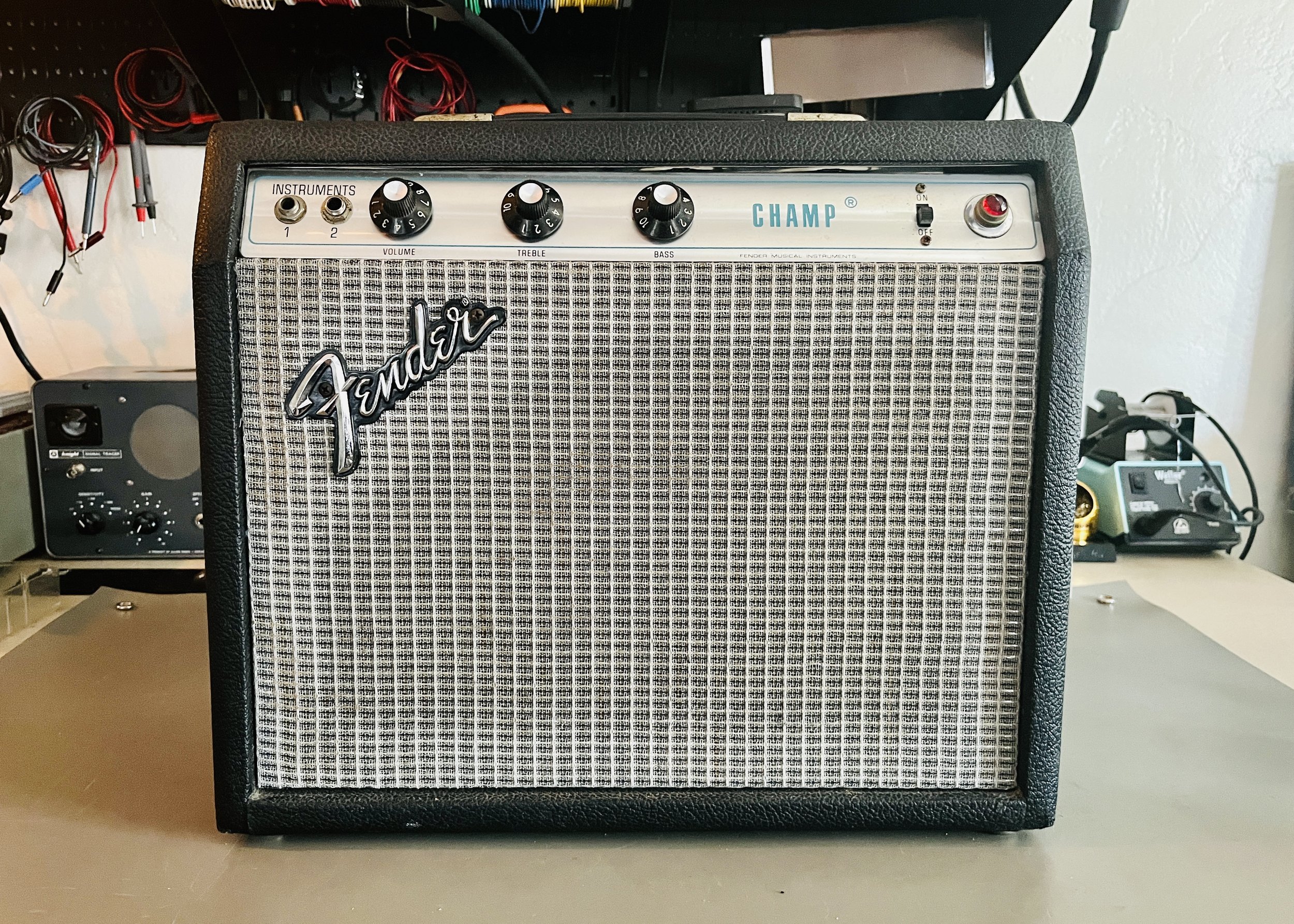1979 Fender Champ
Compared to most other amp models that Fender produced, they kept the Silver-Panel Champ and Vibro Champ circuits almost unchanged from the Black-Panel era. All capacitor and resistor values are the same between the two eras and the only real differences are the cab construction/materials, brand of film caps, plus the change to PVC insulated wires & a slightly messier layout. So if you want a 1960’s Fender amp at a 1970’s price then these are a great value. In my opinion they sound almost identical - they have an iconic sound with a character-laden overdrive crunch at max volume. This amp came in needing a standard restoration and a full de-modification of the circuit.
The customer wanted this amp to sound like it did originally but it had been setup with a different rectifier tube (5V4 instead of the 5Y3GT), a different power tube (6L6GC instead of the 6V6GT), and some incorrect capacitor/resistor choices. This would have attempted to make the amp sound firmer and more powerful but as the Output transformer is capped at about 5-6 Watts it doesn’t really make much of a difference and it stresses the Power Transformer a lot as well. The amp started smelling like it was burning and then was brought to me.
The amp was completely restored. The electrolytic cap can was replaced with a new USA made CE brand exact replica (20uf x 4 @ 475v) for the filter section. The bypass caps were replaced with MOD/Vishay brand electrolytics with upgraded voltage and temperature ratings. New 2 Watt Metal Oxide/5 Watt cement power dropping resistors were installed for better reliability and lower noise floor. All plate resistors were replaced with 2 Watt Reduced Mass Metal Film type units for preventative maintenance and reliability. New vintage spec correct Carbon Comp 1/2 Watt resistors were installed for the input grid stoppers and NFB locations to maintain originality and tone. A new 5 Watt 1K ohm cement cathode bias resistor was installed for better reliability and for stability of the 6V6M bias. All coupling caps were replaced with high quality CDE Orange Drop's to replace the mix of original and replacement parts that were put in by other tech's. A new 3 prong AC cord was installed to replace the old AC cord and the death cap was removed. A new ceramic octal vacuum tube socket was installed to replace the original - it had clipped/damaged pins and was extremely loose.
The original tubes (a mix of NOS and new) did not all test good and were replaced, except for V1. The final lineup chosen was: V1 = NOS GE 12AX7A, V2 = NOS SOVIET 6V6M, V3 = NOS SYLVANIA 5Y3GT. These tubes were picked for best tone and reliability. The 6V6M’s Cathode Bias was set to 93% Class A Plate Dissipation with a B+ of 430VDC. The tube sockets were all re-tensioned to stop the tubes from jiggling or falling out while they hang upside down - they also were cleaned with a De-Oxit treatment to prevent noise from corrosion. The pots were sprayed out and the amp was cleaned inside and out.













